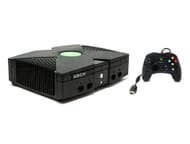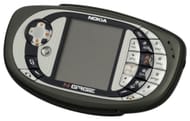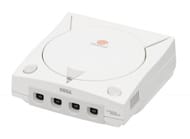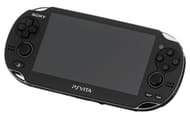There have been a lot of video game consoles released over the years. You've probably noticed that. You might have also noticed that not every one of these is great. Some have even been considered, by many a reliable source, as even "not good."
Sometimes, a console gets released that's just too ahead of its time. It's probably still not very good, but at least the designers were ambitious. These systems were based on some really cool ideas. Were they all implemented well? Clearly not. But the consoles are still all worth remembering.
Note: This article is subjective and reflects the writer's opinions.
Some game consoles had to walk for others to run
This article will be looking at five game consoles, including both home and handheld. All of these have had varying degrees (or lack thereof) of success, and each brought something new to the table. So, let's celebrate these gaming consoles that don't get nearly as much love as they deserve.
5) The original Xbox

To say the OG Microsoft Xbox was a "failure" is far from the truth. Yes, the console's sales were far behind that of Sony's PlayStation 2. But this is the PS2 we're talking about — I think it outsold bottled water at one point. The Xbox sold well enough to get Microsoft's foot in the door of the video game business, which is really just what it wanted to do in the first place.
That being said, this device had a lot going for it. A built-in hard drive for game saves, an ethernet port for broadband internet, and a dedicated service for multiplayer were just a few of the features Microsoft brought to the table with the Xbox. That's not to say that these things were strangers to the table, but, up until then, they hadn't been done nearly as well.
Also, the ability to copy music from CDs onto the hard drive and use them in various games? That's something we may never see again.
4) Nokia N-Gage QD

Many jokes were made and still are being made about Nokia's foray into the gaming world with the N-Gage. And rightfully so — that thing was ridiculous. Despite being the first device to combine a handheld game system with a mobile phone, it had so much going against it.
The unit itself was shaped like a taco, and its design made it cumbersome as both a gaming console and a phone. Swapping out game cartridges requires users to remove the phone's battery, and don't even get us started on the button layout.
Nokia knew it had goofed up and released the revision, the QD, a year later. This console fixed the problems the original had (well, most of them, anyway), and really showed the potential of the kind of device we all carry in our pockets now. And that's really the legacy the N-Gage should be remembered for.
3) Sega Dreamcast

The Dreamcast was Sega's last gasp into the video game console business following the failure of the Saturn.
On the upside, the former had all the elements to be a success. It was powerful, yet reasonably priced. It was the first major home console to have online capability — that was huge. And, of course, it had the might of Sega behind it when it came to software. In a vacuum, the Dreamcast should have been a runaway smash.
Sadly, it had to go up against the PlayStation 2. The PS2 had more third-party support, more name recognition, and just way more goodwill going for it. Sony was coming off the success of the original PlayStation, whereas Sega, well... we just talked about the Saturn.
Still, the Dreamcast wasn't just an innovator as far as tech goes. Booting up those consoles for the first time, hearing that chime sound, and watching that swirl appear on your TV, you really felt like you were using a next-gen system. The PS2 may have been the console to beat that generation, but plenty of companies took inspiration from the Dreamcast for the next.
2) PlayStation Vita

It's so weird that the PlayStation Portable was such an amazing success. Out of the top five best-selling handheld consoles of all time, it's the only one not made by Nintendo. It had plenty of design flaws and suffered from Sony's obsession with ownership.
So, when the company announced the PlayStation Vita and showed off what it could do, it was a revelation. Not only was it powerful, had a brilliant screen, and could sync easily with your Sony home systems, it also had some pretty cool new features. This includes the touchpads on the back of the unit or the front-facing camera that was integrated into gameplay.
The only thing really holding this system back was, as we mentioned before, Sony's insistence on the add-ons being proprietary. Basically, while Nintendo's handheld consoles and nearly all smartphones not made by Apple, or Sony, could use MicroSD storage media, the Vita didn't. Instead, it required Sony's own cards, and man, they were expensive.
If you're looking for a portable system to carry around with you that's not a phone, the Vita is a really, really good option. It has a great library of games, including a huge collection of PSP and PS3 titles. If you can get your hands on one, it's worth it.
1) Nintendo WiiU

The Nintendo WiiU was awesome. No, you shut up! Do you really think you'd have your precious Switch if the company hadn't first released the WiiU? Well, I hope you didn't say "yes" because you'd be wrong.
The WiiU compared to the Switch is like that scene in Independence Day, where the paper with the controls to the alien ship is upside down and Will Smith turns it around. It's like Nintendo going "Oh... oops."
The tragedy of the WiiU is basically a failure of marketing. When it was first unveiled at E3 2011, nobody was sure if what Nintendo was unveiling was a new console or just an add-on for the original Wii. Even when the company attempted to clarify the situation, fans still weren't particularly sure.
Putting that aside, the WiiU — like so many other consoles before it — had so much potential. If more thought had been put into it, the Switch would actually be the WiiU 2. Instead, it will just go down in history as one of the industry's most unappreciated video game consoles.
